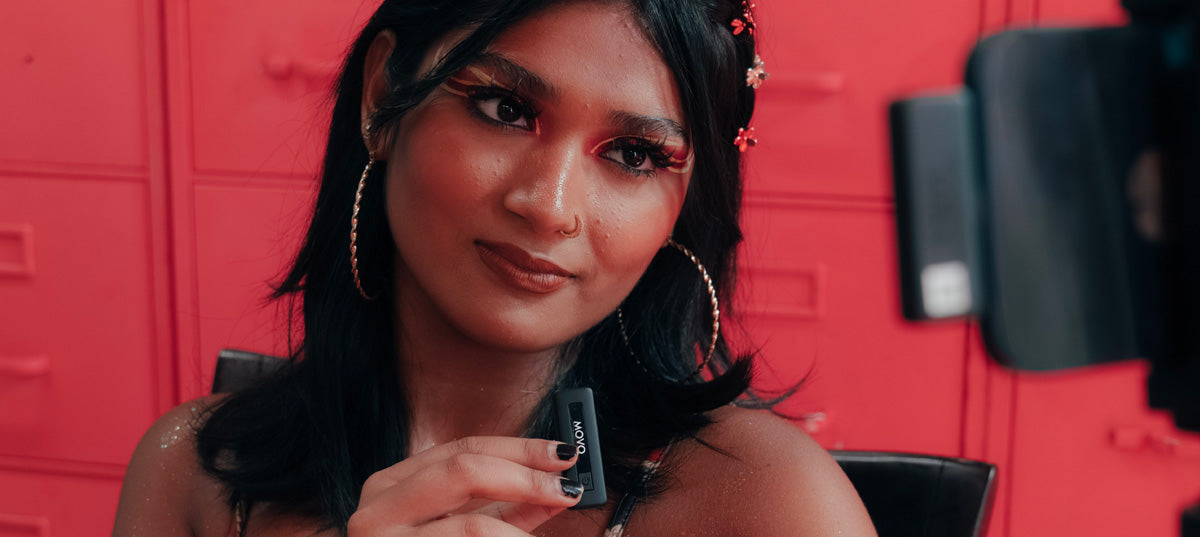Your Cart is Empty
 Free Shipping
Free ShippingEnjoy the convenience of free shipping on all orders. We believe in transparent pricing and delivering value straight to your doorstep. read more...
 30-Day Money-Back Guarantee
30-Day Money-Back GuaranteeShop with confidence knowing you have a full 30 days to try our products. If you're not completely satisfied, return your purchase for a full refund, no questions asked. read more...
 2-Year Warranty
2-Year WarrantyWe stand by the quality of our products with an industry-leading 2-year warranty. Enjoy peace of mind knowing your vlogging and podcasting equipment is covered against defects and issues. read more...
 Lifetime Customer Support
Lifetime Customer SupportOur commitment to you doesn't end at purchase. With lifetime customer support, you can reach out to our expert team anytime for help, advice, or troubleshooting, ensuring you always get the best performance from your gear. read more...

by Tycho Smith April 03, 2020
Microphones are a vital piece of equipment when creating any type of recorded project, but when you watch big feature films, you never seem to see the microphones. This is due in part to the fact that sometimes directors will make use of boom mics, which are held above the speaker and out of the frame of the camera. However, lavalier microphones are also often used when filming because this device is small, discreet and can easily be tucked away and out of sight. Lavalier microphones are perfect for interviews or scenes when the actor is moving around a lot and we still need to hear his or her dialogue. If you’ve never used a lavalier mic before, learn more about these pieces of equipment and how to keep them tucked away from the camera.
A lavalier microphone is a small device that features a clip-on option, making it easy to attach to a speaker's shirt or other article of clothing. Lavalier microphones are typically made with two different pickup patterns—omnidirectional or unidirectional. The type of audio that you are hoping to capture for the scene will determine which of these patterns will better suit your needs. Omnidirectional mics are able to pick up sound from many different directions and are usually used when filming TV shows or hosting concerts. Unidirectional mics are designed to pick up sound in one specific direction. A unidirectional lavalier microphone is probably most beneficial if you’re trying to capture each individual’s dialogue, especially if there is a lot of movement in the scene.
Using a lavalier microphone is fairly simple. The first step to using your new mic is mounting it on the speaker. The mounting spot is important as it needs to be somewhat close to the speaker’s mouth in order to pick up the sound, but if you are creating a movie or short film, you probably do not want the mic to be visible. There are plenty of ways to tuck the lavalier mic away and still capture great audio. Lavalier microphones are available in wired and wireless options, but you will also need a receiver to pick up and record the audio. If the wired receiver is attached to the speaker, be careful not to catch the receiver in your shot as well.

A classic method for disguising a lavalier microphone, pinning the device to the button area of a dress shirt can easily make the mic disappear. You need to find the exact spot where both sides of the shirt meet, and be careful to pin it very precisely so it doesn’t slip out in the middle of a scene. You can also tuck a lavalier microphone away near the button of a dress shirt, but you want to make sure that it doesn’t rub against the fabric too much, creating a strange and distracting sound. For females wearing shirts that have thin straps or no straps, many people will tape the mic to their sternum, keeping it out of sight yet still doing its job.
This may come as a surprise to some people, but directors often use hair to cover up lavalier microphones. Because the device is placed on the actor’s head, it’s easy to still pick up their dialogue, and the hairline can easily disguise a microphone. Although this is a creative tip for many, it may not always work. If your actor has very thin hair or not much hair at all, you’ll have to explore other options.
There are dozens of great accessories that are used as part of an actor’s costume that can also double as a place to hide a mic. For example, tucking a lavalier microphone right behind the knot of a tie is a clever way to hide in plain sight. If your actor is wearing a helmet for some reason, you can tuck the mic into the helmet. Any other accessories that are near the head or neck are great places to hide a mic, so try getting creative.
Once you’ve mastered the art of how to use a lavalier microphone, you can get creative with hiding this handy little device. The convenience and freedom that lavalier microphones offer is perfect for film projects as the sound quality is great and the design allows actors to move around the scene freely, making it easier to capture beautiful shots and dialogue at the same time. Test out some of these tips for hiding a lavalier microphone and get started on your next great project!
We’re a team of creators and entrepreneurs who proudly support the content creation community through innovative, high-quality products that let you do you. From filmmakers to photographers, vloggers to podcasters, and beyond, Movo helps you share your creative voices across countless mediums and content platforms everywhere.
Receive access to exclusive deals, updates, and more.
